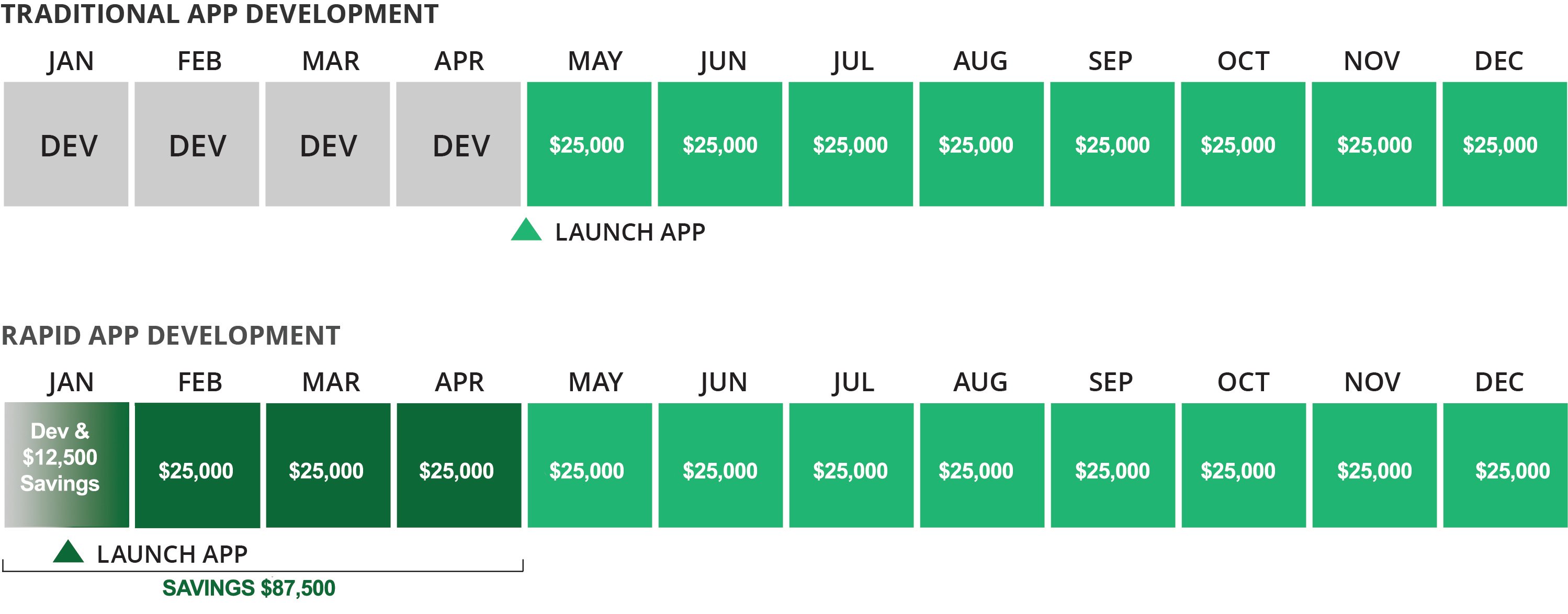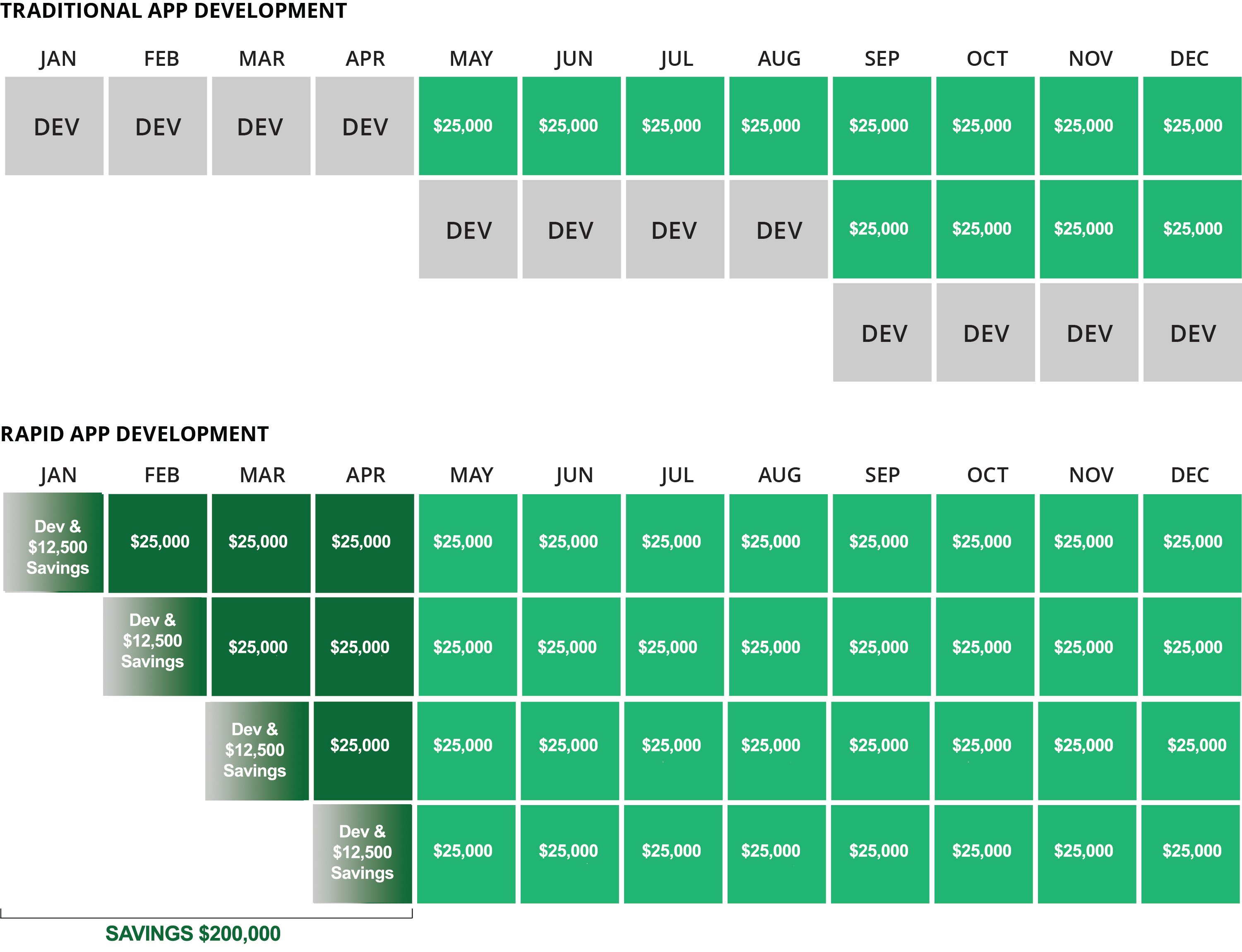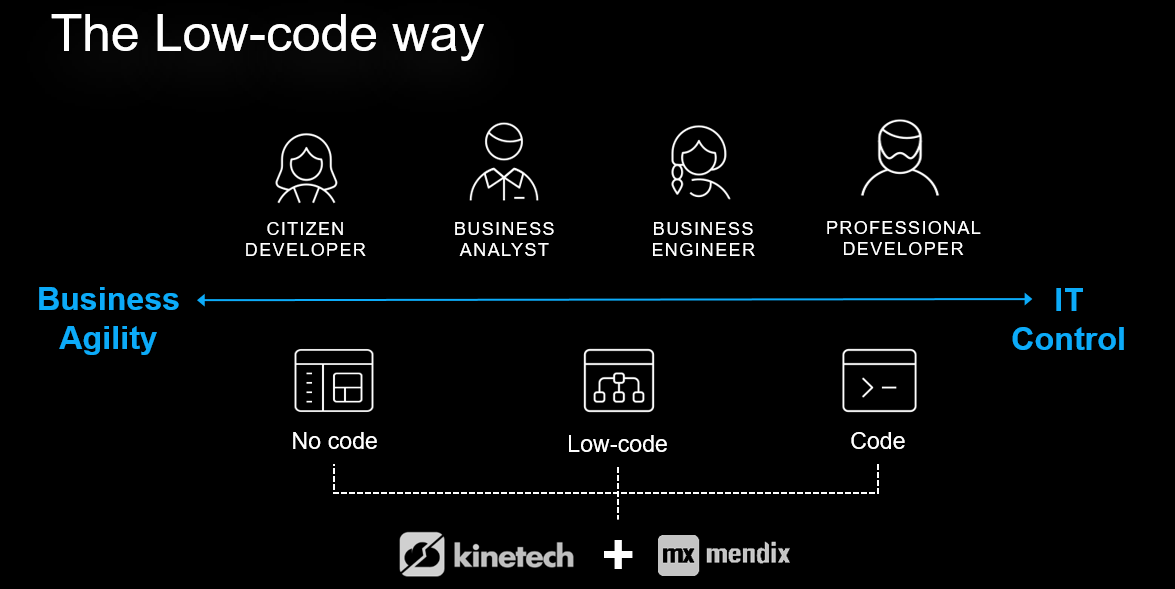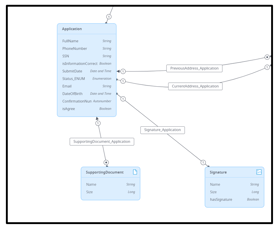‘Software is Eating the World’ as Andreessen Horowitz, a famous venture investor, wrote in the Wall Street Journal in 2011. Software is all around us and we use it every day. In fact, the top five largest companies in the world (by market capitalization) are software companies. Software's proliferation into our lives means it holds tremendous power to either save or waste our time. At work, this ultimately translates to substantial savings or costs in both time and actual dollars.
For all the advancements made in consumer software - your phone can order Starbucks, call an Uber, manage your investments, and stream a show seemingly simultaneously - you probably work with frustrating and inefficient software at your job. Many of us feel the constant pressure of work and the frustration of advancing it through overly complicated and outdated systems. Often these systems require a prohibitive amount of investment to change, so they remain static.
If you want to make yourself, your department, or your business more efficient without having to wrestle legacy IT systems or worry about large investments of capital, it is time to explore low-code solutions.
Low-Code for the Win
Low-code is exactly what it sounds like. Instead of trying to re-program or move everything over to new software, low-code solutions add easy-to-use applications that speed up work processes without adding extra IT burden. Web and mobile applications can be easily created without writing code on a drag-and-drop interface that enables non-technical developers to integrate these new interfaces into existing systems and share information into the right places.
For example, if you still have paper (i.e. intake) forms that are used, those are probably having to be hand-transcribed into some type of digital system. You could easily eliminate that entire transcription process by developing a low-code phone application that users fill out and submit to your existing database.
Examples of applications that we have built recently include:
- A secure investor portal for a financial institution that saves 480 man-hours a year by automating repetitive tasks
- Moving a utility assistance application for the City of San Antonio from a manual paper process to web application that saves their DHS department hundreds of hours a year
- Helping an energy company forecast 12-24 months into the future, which prepared them to successfully weather a 64% drop in oil prices
- Building a custom mobile app and integrated ERP that ensures 100% of orders are submitted correctly, speeding up the sales cycle and generating three times the ROI in two years
- Developing an enterprise project management application that streamlined documentation efforts for General Contractor that earned back its cost in under 12 months through time saved
All these solutions were developed and deployed much faster than standard software offerings on the market and include a web app for mobile usability making them easy for employees and clients to adopt and use.
Not just saving time, making money
Low-code does not just save time. Since most low-code solutions can be developed in a matter of weeks instead of months – on average six times faster than traditional solutions - you can start saving/making money faster.
For example, if you thought a new application would save you $25,000 a month in time and labor, rolling it out in two weeks vs. four months means you save an extra $87,500 during the 14 weeks the low-code solution is in place that the traditional solution was not. Or, if you thought an application would make you $50,000 in revenue a month, you would be making an extra $175,000 during the 3.5 months the low-code application is out on the market that the traditional application is not.

In fact, most of our customers recognize a 100% Return on Investment (ROI) in the first 12 months of adopting a low-code solution.
Quickly Building Value – The Power of Compounding
Not only do you reap the time-savings benefits from the first application getting done a lot sooner, but having that application done frees time to develop additional low-code solutions that bring value to your business. Getting a second, third or fourth application done during the months that you still would have been working on the first traditional solution means you are actually gaining nearly a years’ worth of value in traditional programming time in just a few months.

If you save $25,000/month for each solution you deploy, those original 16 weeks that would have been dedicated to just one solution are now saving you:
- $12,500 – two weeks’ worth of savings in the first month
- $25,000 during the second month for the first application plus
- $12,500 during the second half of the second month when the second application is done plus
- $50,000 during the third month for the first two processes that are now efficient plus
- $12,500 during the second half of the third month for the third application you roll out, plus
- $75,000 during the fourth month for the first three applications that are in place, plus
- $12,500 for the last two weeks of the fourth month that the fourth application is saving you money.
Which totals up to nearly $200,000 worth of savings in just four months. For our revenue example, your total for four applications developed during the same time at $50,000/application/month comes out to $400,000 in gained revenue that would have been lost to development of just the first solution.
Sounds Like Hype -What’s The Catch?
Low-code has actually been around for over a decade and is used by industry leaders like, NC State, Exp Realty (NASDAQ: EXPI), DIRTT (NASDAQ: DRT), University of Pennsylvania (UPENN), The City of San Antonio, Connoco Phillips, and more. Low-code solutions were developed to help address the software development gap - the current demand for software developers outpaces the number available - by allowing multiple different people across an organization to contribute in the software development process.
It really is very simple to implement. It does not require expert programming experience, and if you already have an established IT department, they can likely implement some solutions themselves. It is also cloud-native, which means no hardware is required. In addition, you can deploy low-code solutions in the way that works best for your organization; simply creating a URL to a more complex multi-cloud or onsite hosting setup.

If your IT department is like most of our customers, you will reap other long-term benefits. By engaging more employees in the software development process, you will free IT-specialists to focus on more technical challenges (software integrations, application modernization, cloud-migration) while giving “citizen developers” and business analyst / “power users” (typically non-computer science trained professionals who are proficient in excel) to build solutions that address their needs. Meanwhile, the Information Technology (IT) department and still maintain governance and ensure security standards are being upheld.
IT departments become much more efficient as well. North American low-code adopters have found with custom development, they spent roughly 34 hours of time just on product approvals alone. Using low-code, they shrunk that number to four. Considering the developer day rate average in the US to be ~$300, this is a significant cost saving.
The cost of ownership for many traditional software solutions is very high, especially if you are working with a locally hosted (on-premise) environment. A lot of your IT department’s time is spent on security patches, supporting users, and upgrading applications as upgrades are released.
With the ability to integrate with any other software with modern web-services / REST APIs, connectors to popular enterprise solutions from Salesforce and SAP, and collaboration-focused IDEs (Integrated Development Environments) with reusable components, low-code solutions offer a flexible solution to meet the unique needs of your organization.
IT departments become much more efficient as well. North American low-code adopters have found with custom development, they spent roughly 34 hours of time just on product approvals alone. Using low-code, they shrunk that number to four. Considering the developer day rate average in the US to be ~$300, this is a significant cost saving. In a custom stack, the company spent 7.5 hours per support ticket, with 25 tickets over the application’s lifetime. With low-code solutions, they reduced those numbers by 40% and 60% respectively.
Getting Started with Low-Code
Don’t take our word for it though, try it out! Low-code solutions are not cost-prohibitive to implement so the best way to see if we are right is to implement your first one. To learn more about low-code solutions for your industry or to talk to an expert about your specific needs, call: +1 832 426 2000 or visit kinetechcloud.com.


.png?height=60&name=image%20(86).png)

